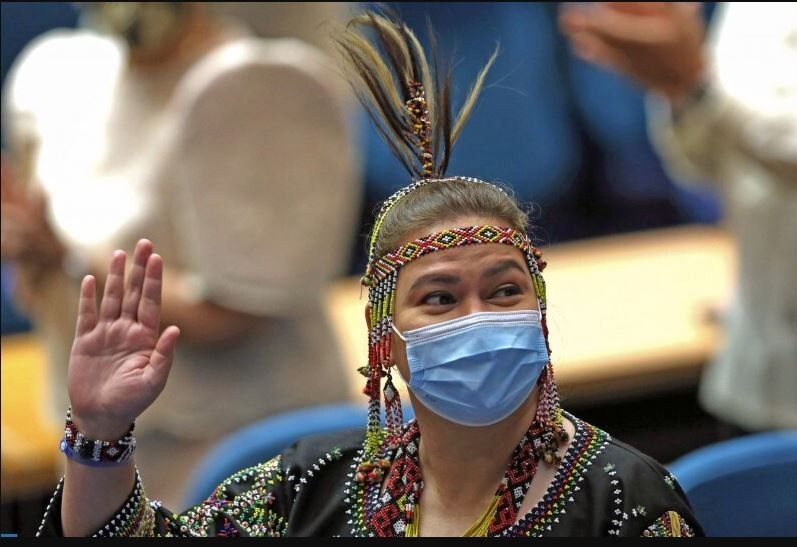Sara Duterte makes grand entrance in Bagobo Tagabawa dress for SONA 2022

MANILA, Philippines — Vice President Sara Duterte arrived wearing a borrowed Bagobo Tagabawa dress for President Ferdinand "Bongbong" Marcos Jr.'s first State of the Nation Address (SONA) today.
Days before SONA, the Vice President's spokesperson, legal counsel Reynold Munsayac, shared that she will be borrowing the traditional Bagobo Tagabawa dress from Deputy Mayor of the Tagabawa tribe of Davao City Bae Sheirelle Anino due to time constraints. The entire ensemble of the traditional dress takes over a month to make.
The Bagobo's weaves are known as Inabal, a traditional textile made from abaca using a special weave. These are made into either patterns of Kinatkat or Ine worn by women. Vegetable and natural dyes are used to color the Ikat-styled textiles that are customarily used as clothing by their royalty.
Related: Weaving a Future
According to an article by Sonia Mangune published on the website of the National Commission for Culture and the Arts, the Bagobo is one of the largest groups of indigenous peoples of southern Mindanao. They are composed of three sub-groups, namely the Tagabawa, the Clata or Guiangan and the Ubo. These sub-groups may belong to one socio-linguistic group called the Bagobo, but they differ in some ways such as the dialects, dance steps, costumes and their color preferences.
VP SARA IS HERE.
— Philstar.com (@PhilstarNews) July 25, 2022
Vice President Sara Duterte, wearing a traditional Bagobo Tagabawa dress, is present at the inaugural house session. She is the chairman of Lakas-CMD, which is emerging as one of the dominant parties in the House.
???? RTVM/Screenshot pic.twitter.com/Ob1mYG2Z5t
Mangune is a member of the District Federation of Tribal Councils and is president of IPS Council for Children. She works as Records Officer at the Mayor’s Office, Davao City.
In the Ethnology article titled "Costume, Kóstyom, and Dress: Formulations of Bagóbo Ethnic Identity in Southern Mindanao," by Cherubim Quizon, it said the Bagobo consider their traditional cloth and clothing as polysemic symbols of group identity and personhood.
"The range of meanings connects them to the larger communities of city, region, and nation. The Bagóbo call their ceremonial dress ompák (clothing) when discussing it among themselves but use kóstyom (costume) when talking to non-Bagóbo," the abstract stated.



















